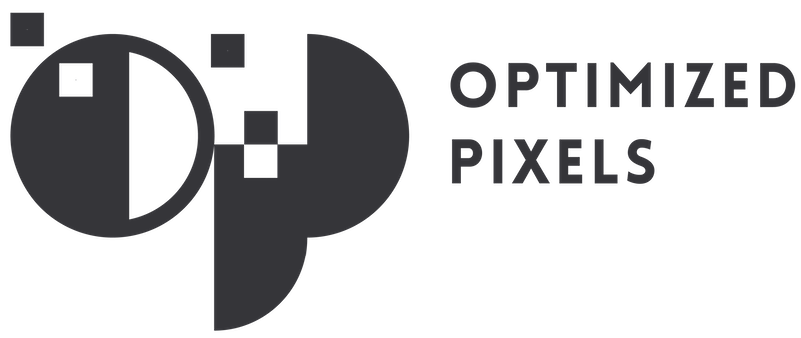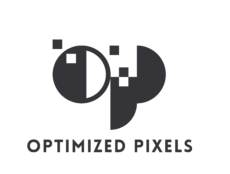The term “design partner” is intentionally chosen to emphasize the depth of this relationship. A suitable design partner is not just a service provider but a collaborator who understands the essence of your brand and helps you communicate it effectively to your audience. This partnership is about forging a connection that goes beyond mere transactional interactions; it’s about aligning visions and working harmoniously towards shared goals.
The search for the right design partner demands considerable time and energy investment. It’s crucial to discern which qualities are most aligned with your brand’s ethos and objectives. This process is not just about finding a team capable of producing high-quality creative work; it’s about finding a partner who understands and can breathe life into your brand’s vision and values.
Trust forms the bedrock of any successful design partnership. You need to have faith in your partner’s ability to deliver work that not only meets but exceeds expectations, encapsulating the very soul of your brand. However, the relationship encompasses more than just the final creative product. It involves a journey of mutual understanding, shared creative exploration, and continual growth.
When looking for a design partner, there are five key qualities that you should prioritize:
Creativity: The hallmark of any great design partner is their creativity. It’s not just about having a knack for good design but about bringing innovative, out-of-the-box ideas to the table. The ability to approach problems with unique perspectives and craft solutions that stand out is invaluable.
Scope of Services: Your design needs might range from very specific to wide-ranging. A good design partner should offer a spectrum of services, from specialized areas like video production to more comprehensive offerings like brand and digital design. Assessing the scope of services is crucial to ensure they can meet your immediate needs and adapt to future requirements.
Flexibility: The business landscape is ever-changing, and so are design needs. A design partner that can swiftly adapt to changing priorities or market trends is a valuable asset. Their ability to pivot and adjust to new challenges is a critical factor in maintaining a dynamic and responsive brand presence.
Cultural Fit: The importance of a design partner aligning with your company’s culture cannot be overstated. This goes beyond mere work styles or communication preferences; it’s about shared values, visions, and approaches to work. A partner that resonates with your company’s ethos will lead to a more harmonious and productive collaboration.
Added Value: Finally, a design partner should bring more to the table than just their technical skills. They should be a source of fresh ideas, insights, and perspectives that can help elevate your brand to new heights. Look for partners who show a commitment to adding value, who are invested in your success as much as their own.
Choosing a design partner is a decision that requires careful thought and consideration. It’s about finding a team that not only has the technical expertise to bring your creative vision to life but also shares your passion and understands your brand’s core essence. The right design partner can become an invaluable extension of your team, helping to propel your brand forward in exciting and innovative ways.
![]()
Creativity
Creativity isn’t just an aesthetic choice—it’s a crucial business strategy. Up to 75% of campaign performance is influenced by creative quality, underscoring the importance of selecting a design partner who can bring a blend of innovation and practical problem-solving skills. Effective design is a unique method of communicating ideas; it should resonate with audiences visually, emotionally, and intellectually.
When evaluating potential design partners, pay attention to:
Diversity in Approaches: Examine their portfolio, case studies, and social media content. A versatile design partner will showcase a variety of styles and solutions, demonstrating their ability to adapt to different challenges and industries.
Individual Style: Every design agency or partner has a unique fingerprint. Some may excel in bold, avant-garde designs, while others might specialize in minimalist, elegant styles. Assess their body of work to determine if their style complements your brand’s identity and objectives.
Personal Connection: Often, the best working relationships are built on a personal connection. During your interactions, note if there’s a natural alignment with their design philosophy and your brand vision. Trust your gut feeling—if you find yourself consistently drawn to a particular partner’s work, it could be a sign of a promising collaboration.
The creativity of your design partner significantly impacts the effectiveness of your marketing campaigns. Look for a partner who not only showcases diverse and impressive work but also resonates with your brand’s ethos and goals.
Scope of Services
Choosing a design partner also means evaluating their range of services. This spectrum can range from niche specializations like video production or interactive design to a broader array of creative solutions. Your current and future creative needs will dictate whether a specialist or a generalist is more suitable.
Aspects to consider include:
- Immediate Needs: Assess the services that are critical for your current marketing strategies. If your focus is heavily on social media, find a partner with proven expertise in this area.
- Future Requirements: Anticipate the evolution of your marketing needs. Will you venture into innovative territories like augmented reality or 3D design? Opt for a partner who is not just capable but also eager to explore new creative avenues with you.
- Workforce Capacity: The size of the design partner’s team is crucial. A freelancer might be limited by their individual capacity, whereas an agency could offer a more extensive team. Understand how their team size aligns with your project volumes and deadlines.
In addition to service scope, it’s vital to weigh the financial aspect of the partnership. Utilize tools like design cost calculators to estimate the investment required, ensuring that your chosen partner fits both your creative ambitions and budgetary constraints.
5 Red Flags to Avoid in a Creative Partner
A Serious Snooze Factor:
- Lack of Work Samples: Be wary if a potential partner has minimal or no portfolio. Even new professionals should have some examples of their work.
- Uniformity in Design: A portfolio that lacks diversity and creativity is a red flag. Seek variety and innovation.
- Absence of Enthusiasm: If their work doesn’t spark interest or excitement, it might not resonate with your audience.
Narrow-Mindedness:
- Limited Perspective: Avoid partners who struggle to understand or align with your vision.
- Lack of Self-Awareness: The best partners know their strengths and ideal client types.
- Inflexible Creativity: Over-processed or rigid designs can stifle the dynamic needs of your projects.
Rigidity:
- Resistance to Change: Flexibility is key in design. A partner that is too rigid can be problematic.
- One-Sided Communication: A partner should engage in a dialogue, not a monologue.
- Lack of Conceptual Flow: Creativity should be natural and adaptable.
Narcissism:
- Dismissing Your Concerns: Avoid partners who don’t take your ideas and feedback seriously.
- Egotism: Overbearing pride can hinder collaborative efforts.
- Inflexibility: An unwillingness to adapt or consider your perspectives is a major red flag.
Angry Exes:
- Consistent Negative Feedback: Patterns of dissatisfaction from previous clients can indicate underlying issues.
- Reluctance to Provide References: Hesitance in offering references may signal a lack of confidence in their past work.
- Blaming Clients: Consistently blaming clients for past project failures is a warning sign.
It’s crucial to choose a design partner who is not only talented but also aligns with your values, communication style, and creative vision. Remember, the right partner can significantly contribute to the success of your brand.
Flexibility
In the fast-paced world of business and marketing, flexibility in your design partner is crucial. It’s essential to choose a partner who can adapt to sudden changes in the market, shift priorities swiftly, and handle the unexpected.
Key aspects of flexibility to consider include:
- Adaptability to Change: Evaluate if the design partner is comfortable with adapting plans and timelines. The ability to pivot strategies and reprioritize projects is vital in a dynamic business environment.
- Rapid Turnaround Capability: Determine their ability to deliver projects under tight deadlines. Speed is often critical, especially in campaigns or product launches.
- Versatility in Project Types: Assess whether they prefer working on specific types of projects or if they have the capacity to handle a diverse range of creative tasks, from simple designs to complex, concept-driven projects.
Ultimately, a design partner’s flexibility can significantly impact the success of your marketing efforts, making it a key criterion in your selection process.
Cultural Fit
Cultural fit is about how well your ethos, values, and working styles align with those of your design partner. It’s a crucial element that can dictate the smoothness and success of your collaboration.
Key elements to assess for cultural fit include:
- Communication Style: Evaluate if their communication methods match your preferences. Are they proactive in keeping you updated? Is the dialogue open and transparent? The right partner should make you feel involved and heard.
- Work Style Compatibility: Determine if their work style aligns with yours. Whether it’s a preference for detailed, hands-on involvement or a more hands-off approach, compatibility in work style is key for a seamless partnership.
- Shared Values: Identify if your core values resonate with theirs. Values like trust, innovation, and transparency not only influence how they approach work but also how they interact with you. Shared values are the foundation of a strong, enduring partnership.
- Added Value
The concept of added value in a design partnership extends far beyond the transactional aspects of the relationship. It’s about the tangible and intangible benefits that a design partner brings to the table, enhancing your brand and contributing to your business’s success.
Considerations for added value include:
- Transparent Pricing: Seek clarity in their pricing model. Is it per hour, per project, or a subscription? Understanding their pricing structure ensures no surprises and helps in budget planning.
- Cost-Effectiveness: Evaluate their approach to cost-efficiency. Does the partner offer flexible solutions like rolling over unused hours or resources? This adaptability can maximize your investment.
- Commitment to Your Success: Assess if they are genuinely invested in your success. A partner who goes beyond just delivering services to offer strategic insights and proactively suggest improvements demonstrates a commitment to truly adding value to your business.
![]()
5 Red Flags to Avoid in a Creative Partner
A Serious Snooze Factor:
Lack of Work Samples: Be wary if a potential partner has minimal or no portfolio. Even new professionals should have some examples of their work.
- Uniformity in Design: A portfolio that lacks diversity and creativity is a red flag. Seek variety and innovation.
- Absence of Enthusiasm: If their work doesn’t spark interest or excitement, it might not resonate with your audience.
Narrow-Mindedness:
- Limited Perspective: Avoid partners who struggle to understand or align with your vision.
- Lack of Self-Awareness: The best partners know their strengths and ideal client types.
- Inflexible Creativity: Over-processed or rigid designs can stifle the dynamic needs of your projects.
Rigidity:
- Resistance to Change: Flexibility is key in design. A partner that is too rigid can be problematic.
- One-Sided Communication: A partner should engage in a dialogue, not a monologue.
- Lack of Conceptual Flow: Creativity should be natural and adaptable.
Narcissism:
- Dismissing Your Concerns: Avoid partners who don’t take your ideas and feedback seriously.
- Egotism: Overbearing pride can hinder collaborative efforts.
- Inflexibility: An unwillingness to adapt or consider your perspectives is a major red flag.
Angry Exes:
- Consistent Negative Feedback: Patterns of dissatisfaction from previous clients can indicate underlying issues.
- Reluctance to Provide References: Hesitance in offering references may signal a lack of confidence in their past work.
- Blaming Clients: Consistently blaming clients for past project failures is a warning sign.
It’s crucial to choose a design partner who is not only talented but also aligns with your values, communication style, and creative vision. Remember, the right partner can significantly contribute to the success of your brand.

